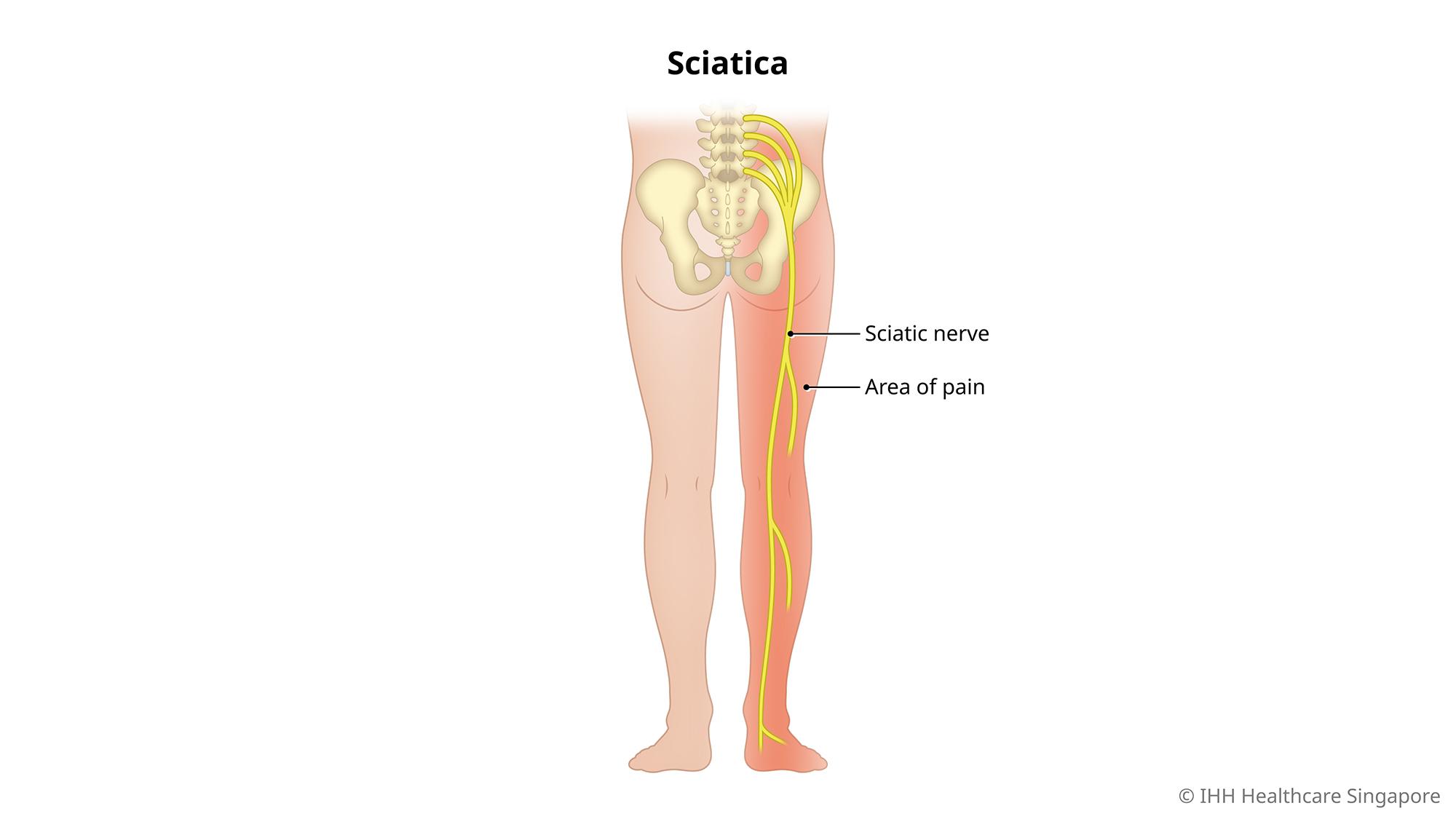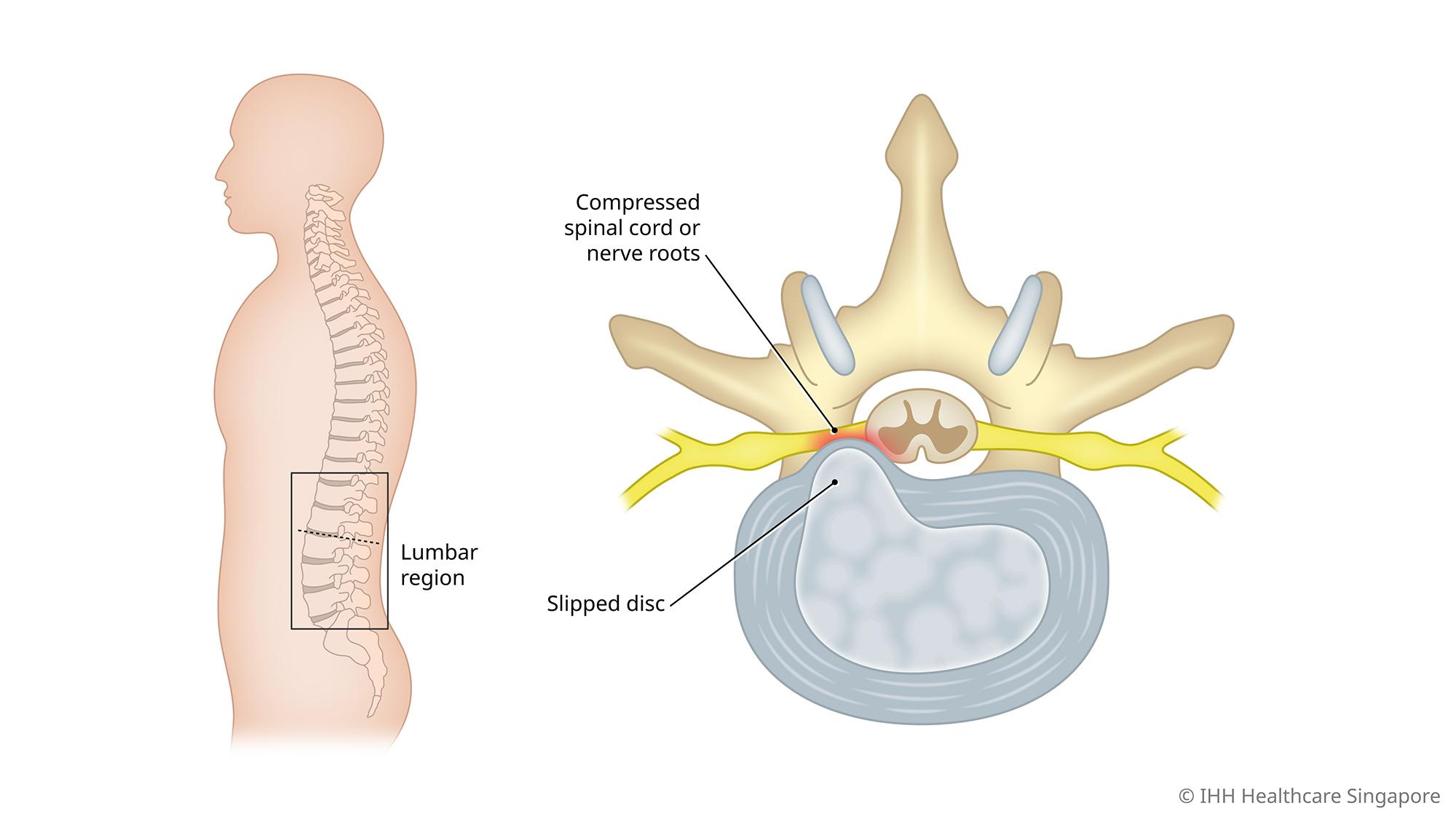-
-
Featured Care Areas

Sciatica (Pinched Nerve)
What is sciatica?
Sciatica refers to pain along the sciatic nerve. This nerve extends from the back of the pelvis through the hips and buttocks and down the back of the thigh.
The sciatic nerve is the largest nerve in the body and also the main nerve of the leg. It controls the muscles and provides sensation in the whole leg.
Sciatica is also known as lumbar radiculopathy.
What are the symptoms of sciatica?
Symptoms of sciatica vary among individuals.
Some common symptoms include:
- Pain that usually radiates below the knee to the calf and the foot
- Sensory changes, e.g. numbness, tingling, pins and needles, and the sensation of ants crawling
- Weakness
Typically, sciatica affects only one side of the body.
What causes sciatica?
Sciatica is most commonly caused by a herniated or ‘slipped’ disc in the spine that presses on a spinal nerve. Neuritis (inflammation of the nerve root) can also cause sciatica.
Less common causes include:
- A spinal injury or infection
- A growth within the spine (tumour)
- Spinal stenosis, which is associated with bone spurs that can sometimes cause sciatica
- Nerve damage due to a disease such as diabetes
What are the risk factors for sciatica?
Risk factors for sciatica include:
- Age-related changes in the spine, such as herniated discs and bone spurs
- Obesity, which can increase the stress on the spine and contribute to spinal changes that trigger sciatica
- Prolonged sitting or a sedentary lifestyle
- Diabetes, which can increase the risk of nerve damage
- Genetic factors, which can cause degenerated or herniated discs in the lower spine
What are the complications and related diseases of sciatica?
Depending on the cause of the sciatica, most people tend to make a full recovery.
However in some cases, sciatica can cause permanent nerve damage and lead to:
- Loss of feeling in the affected leg
- Weakness in the affected leg
- Loss of bowel or bladder function
- Loss of sexual function for males
How do you prevent sciatica?
It is not always possible to prevent sciatica, and the condition may recur.
However good back care, posture and lifestyle changes can help to prevent back pain.
- Exercise regularly to keep the back strong. Pay special attention to the core muscles in the abdomen and lower back that are essential for support, proper posture and alignment.
- Maintain proper posture when you sit. Use a back support and make sure both your feet are on the floor, and your elbows, knees, hips and ankles are at a 90-degree angle.
- Adopt good body mechanics, especially when lifting heavy loads or standing for long periods.
This page has been reviewed by our medical content reviewers.
Need help?
For enquiries, please call
+65 6575 7575
For appointment bookings, please WhatsApp
+65 8111 9777






